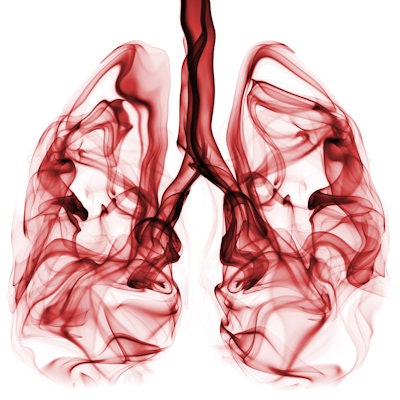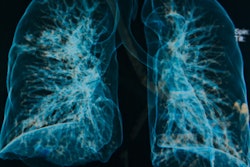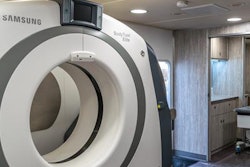
Risk prediction models can differentiate between benign and malignant nodules detected on CT lung cancer screening exams more accurately than current clinical guidelines, underscoring the potential value of the models for lung nodule management, according to a study published online February 14 in JAMA Network Open.
With the goal of improving CT lung screening in mind, various groups have explored the merits of applying the principles of statistical modeling to various aspects of the screening process. These efforts have led to the development of risk prediction models shown to be more effective at identifying individuals at the highest risk of lung cancer than well-established screening eligibility criteria, such as the current U.S. Preventive Services Task Force guidelines.
More recently, groups have developed risk prediction models that use a combination of radiologic features and patient attributes to differentiate between benign and malignant nodules detected on CT scans. Such models could potentially facilitate lung cancer diagnosis and enhance decision-making for nodule management following screening exams, noted senior author Rudolf Kaaks, PhD, from the German Cancer Research Centre and colleagues.
In the current study, Kaaks and colleagues assessed five such risk prediction models developed based on data from CT lung screening studies as well as three different sets of clinical guidelines used to report and manage lung nodules. Four of the models were variants of the Pan-Canadian Early Detection of Lung Cancer (PanCan) risk prediction model and the fifth was a model developed by researchers behind the U.K. Lung Cancer Screening trial.
The researchers applied the five risk prediction models and the three sets of clinical guidelines to data from 1,159 individuals who participated in the German Lung Cancer Screening Intervention trial (LUSI). Trial participants were between 50 to 69 years old, had a smoking history of about 15 to 18 pack-years, and quit less than 10 years prior to screening.
Overall, the four PanCan risk prediction models showed excellent discrimination and calibration for malignant nodules detected on baseline screening, with considerably higher accuracy than the U.K. risk model and the three clinical guidelines.
| Comparison of CT lung screening risk prediction models and clinical guidelines | |
| Area under the curve | |
| PanCan risk models | 0.93 - 0.94 |
| Mayo Clinic nodule management guidelines | 0.89 |
| Peking University People's Hospital nodule management guidelines | 0.87 |
| U.S. Department of Veterans Affairs nodule management guidelines | 0.84 |
| U.K. Lung Cancer Screening trial risk model | 0.58 |
The results of the study suggest that the PanCan risk prediction models, when applied to nodules detected on baseline CT lung screening, "may become useful tools for optimizing nodule management in population screening settings," the authors wrote.
However, the ability of the risk prediction models to distinguish between benign and malignant nodules was much less accurate for nodules detected on follow-up screening exams, Dr. Marjolein Heuvelmans, PhD, and Dr. Matthijs Oudkerk, PhD, from the University of Groningen noted in an invited commentary.
"The sharply reduced model performance when using the different models on nodules newly detected after baseline confirms the need of separate management for new nodules," Heuvelmans and Oudkerk wrote. "This is also true with respect to nodule malignancy risk prediction models."




















